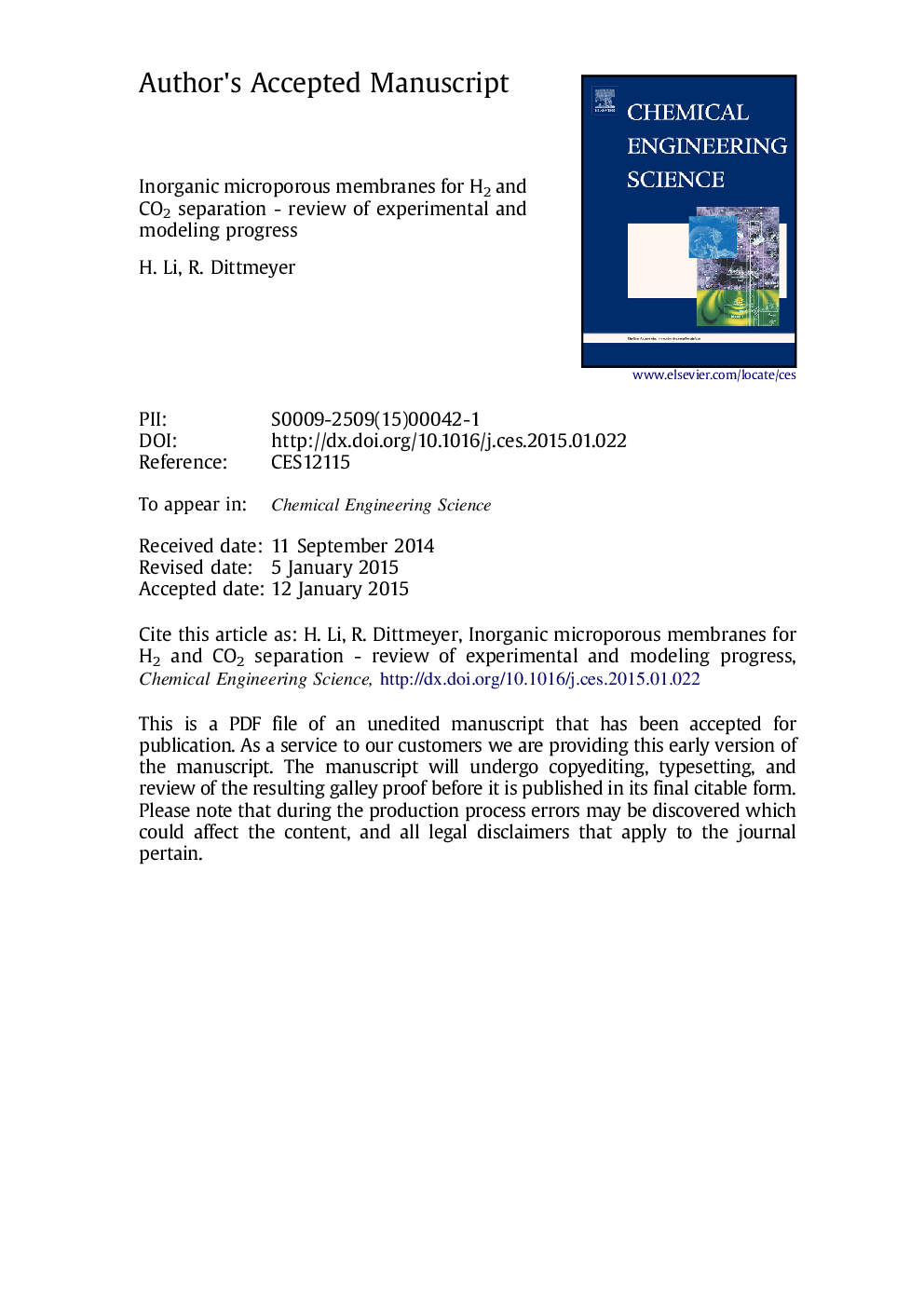| Article ID | Journal | Published Year | Pages | File Type |
|---|---|---|---|---|
| 6590110 | Chemical Engineering Science | 2015 | 77 Pages |
Abstract
Inorganic microporous membranes show great potential in several important applications, e.g., H2 separation, the recovery of CO2 from natural gas and the reduction of green-house gas emission from flue gas. This article critically reviews latest progress in both experimental and modeling study of inorganic microporous membranes for relevant separation processes (i.e., H2/CO2, CO2/N2 and CO2/CH4 separation). Given significant improvement in gas separation performance as well as hydrothermal and chemical resilience, the evaluation of inorganic microporous membranes under industrial conditions is expected in the next step. The transport mechanisms and macroscopic models adopted for light gases are thoroughly discussed. An over-all model considering three relevant mechanisms, i.e., Knudsen diffusion (through defects), activated diffusion and surface diffusion, is highly desirable for the description of light gas transport.
Keywords
Related Topics
Physical Sciences and Engineering
Chemical Engineering
Chemical Engineering (General)
Authors
H. Li, K. Haas-Santo, U. Schygulla, R. Dittmeyer,
